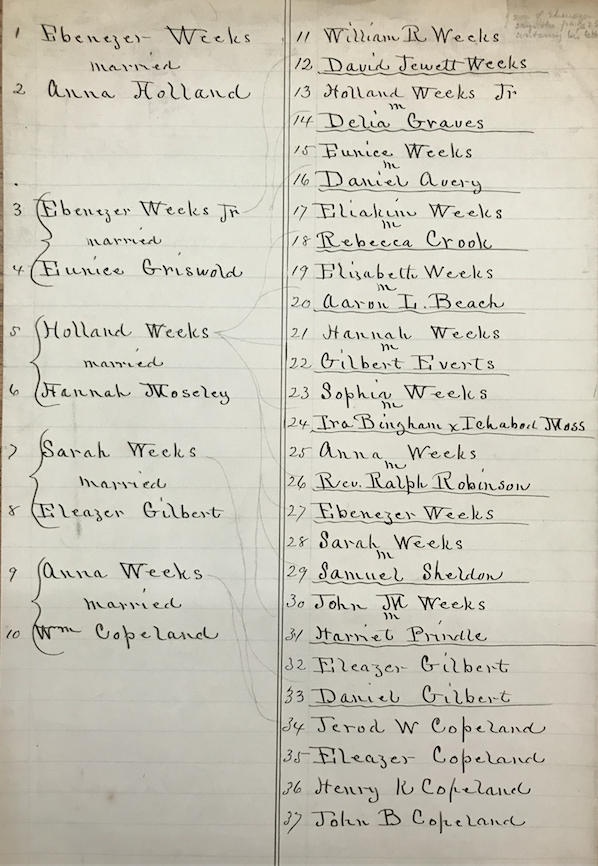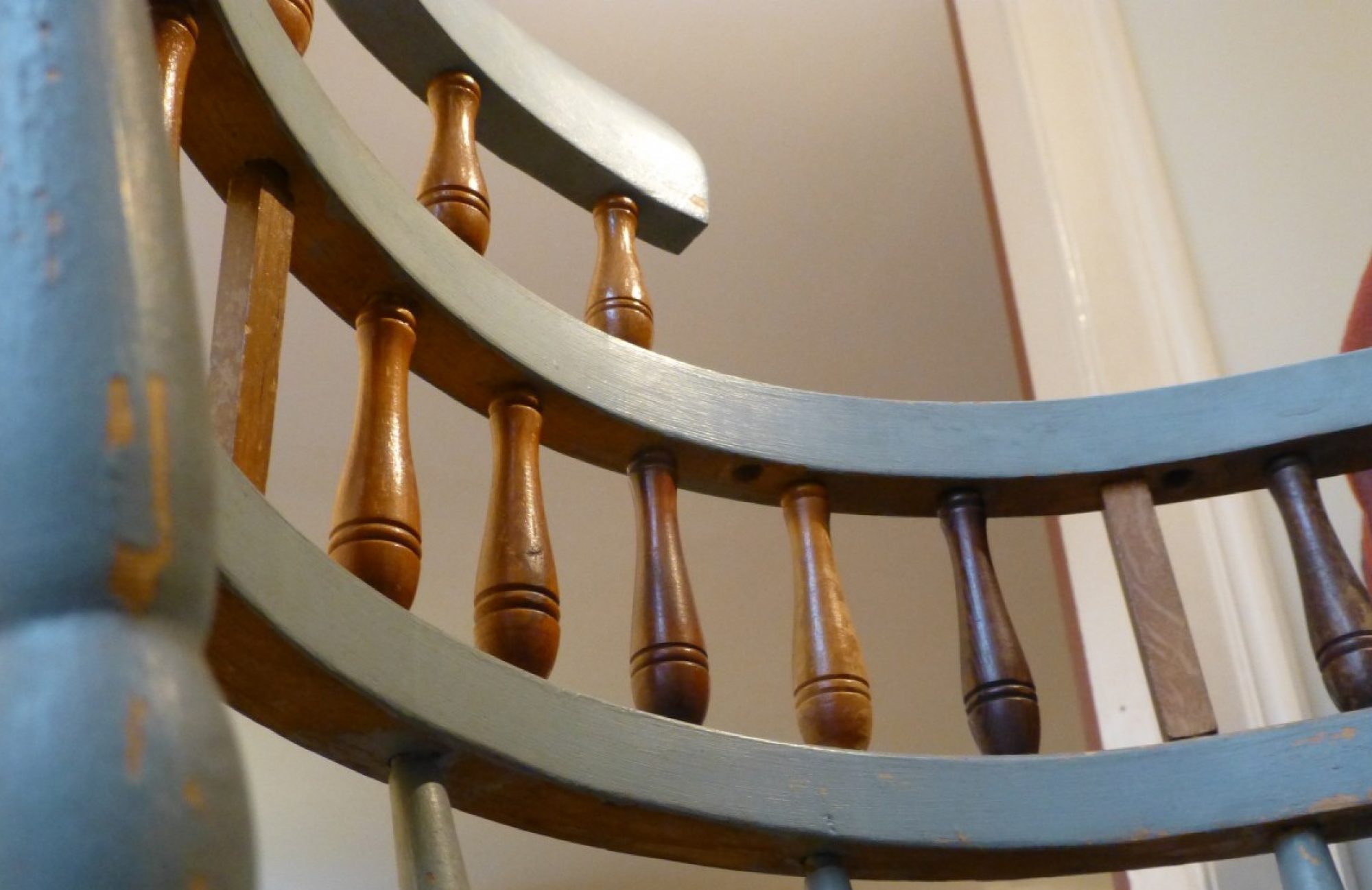This piece of wood was procured from Holland Weeks’s House, also known as the “Weeks Homested,” according to Henry Sheldon. Sheldon might have obtained the specimen himself in 1884 from the attic in Weeks’s house. According to the Weeks Family Papers, there is a record of Hannah Lucy (Weeks) Clarke, daughter of Holland Weeks, giving a “gift” to Henry Sheldon.[1] Sheldon describes the spindle in his log book: “Weeks Homested [sic]. Holland Weeks moved to Salisbury, VT in 1788 and built the house about 18– in which his large family were brought up and lived until all died or removed.”[2]
The acquisitions ledger for the museum indicates that Sheldon received a specimen from the Holland Weeks homestead from a Mr. Hulett on September 13, 1884:

Sheldon’s diary entry from this day reads, “September, 13, 1884. Windy. Cloudy and very cold day. I went to Salisbury and got some old books and relics.”[3] Presumably, one of the “relics” he is referring to is the piece of wood from Weeks’s house.
While Sheldon’s brief description of Holland Weeks is accurate, the Weeks Family Papers provide further insight into Weeks’s life. The Weeks Family lineage traces back to the Mayflower. Holland Weeks was born in 1743 in Pomfret, Connecticut to Ebenezer and Anna Holland Weeks. He then moved to Litchfield in his youth before receiving a land title in Vermont in 1785. Weeks married Hannah Moseley Weeks and had eleven children: Holland, Eunice, Eliakim, Elizabeth, Hannah, Esther, Sophia, Ebenezer, Sarah, and John Moseley. In 1788, Holland Weeks began the process of building his house in Salisbury. He surveyed the land, cleared it, and built a log house. Then, in 1789, he officially moved his family from Connecticut to their new home. Weeks ran a successful farm on this land for several years, and was an active member in the community. He also is credited as building the town’s first cider mill in 1810, two years before his death in 1812.[4]

According to the Daughters of the American Revolution genealogy, Weeks was a “patriot who supplied saltpeter to the Continental Army.”[5] The Continental Army, of course, was established in 1775 in the midst of the American Revolution.[6] Saltpeter was a major component in the production of gunpowder at that time.[7] Though it is unclear how Weeks acquired the saltpeter, or the extent of his relationship with the army, it nonetheless adds an interesting dimension to Weeks’s backstory.
-David McDaniel ’19
Footnotes
[1] Weeks Family. “Weeks Family Papers,” 1764-1900, Box 1, Folder 4, Collection of the Henry Sheldon Museum, Middlebury, VT.
[2] Henry Sheldon, “Log Book” of woods used in the Memorial Chair (H.L. Sheldon papers, vol. 19), Collection of the Henry Sheldon Museum, Middlebury, VT.
[3] Henry Sheldon, “Henry Sheldon Personal Diary,” Collection of the Henry Sheldon Museum, Middlebury, VT
[4] Weeks Family Papers.
[5] Weeks Family Papers.
[6] William P. Kladky, “Continental Army,” George Washington Digital Encyclopedia, edited by Joseph F. Stoltz III. Mount Vernon Estate, 2012–-: http://www.mountvernon.org/digital-encyclopedia/article/continental-army/. Accessed 23 January 2018.
[7] Jimmy Dick, “The Gunpowder Shortage,” Journal of the American Revolution (9 September 2013), accessed 1 February 2018: https://allthingsliberty.com/2013/09/the-gunpowder-shortage/
